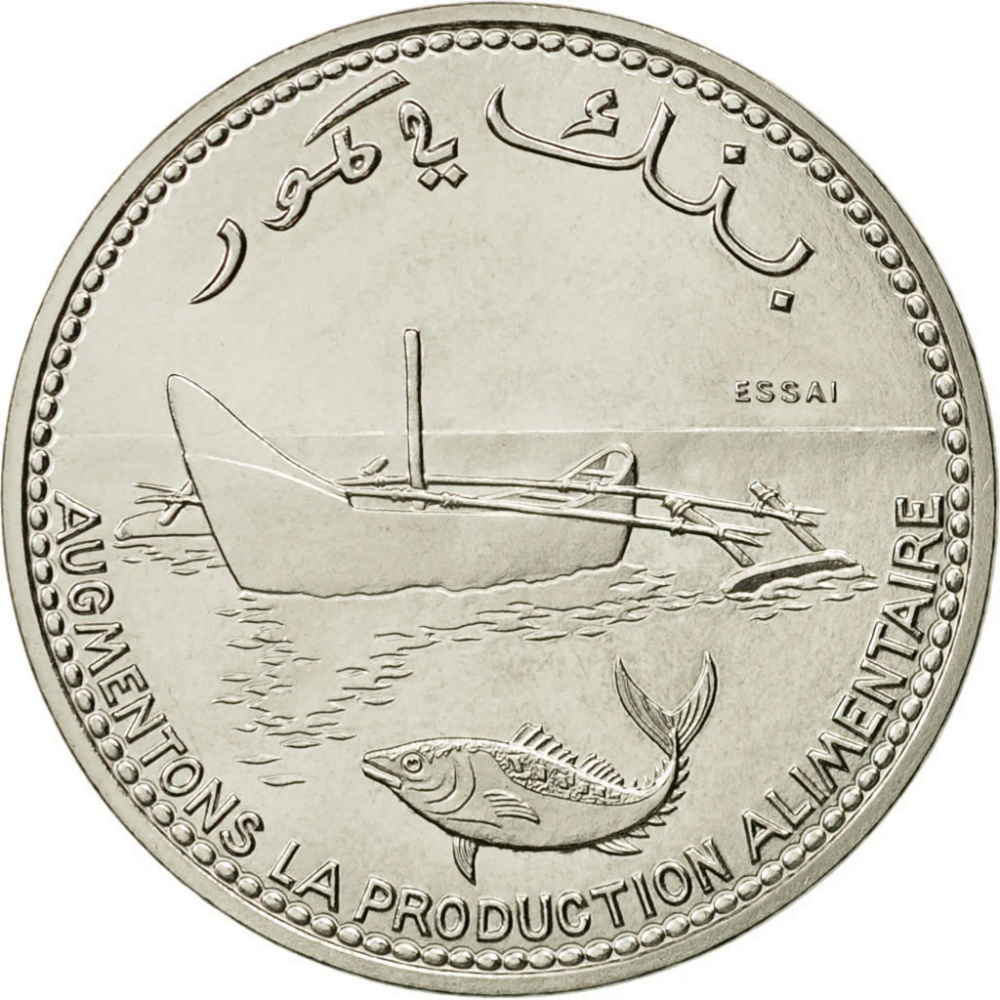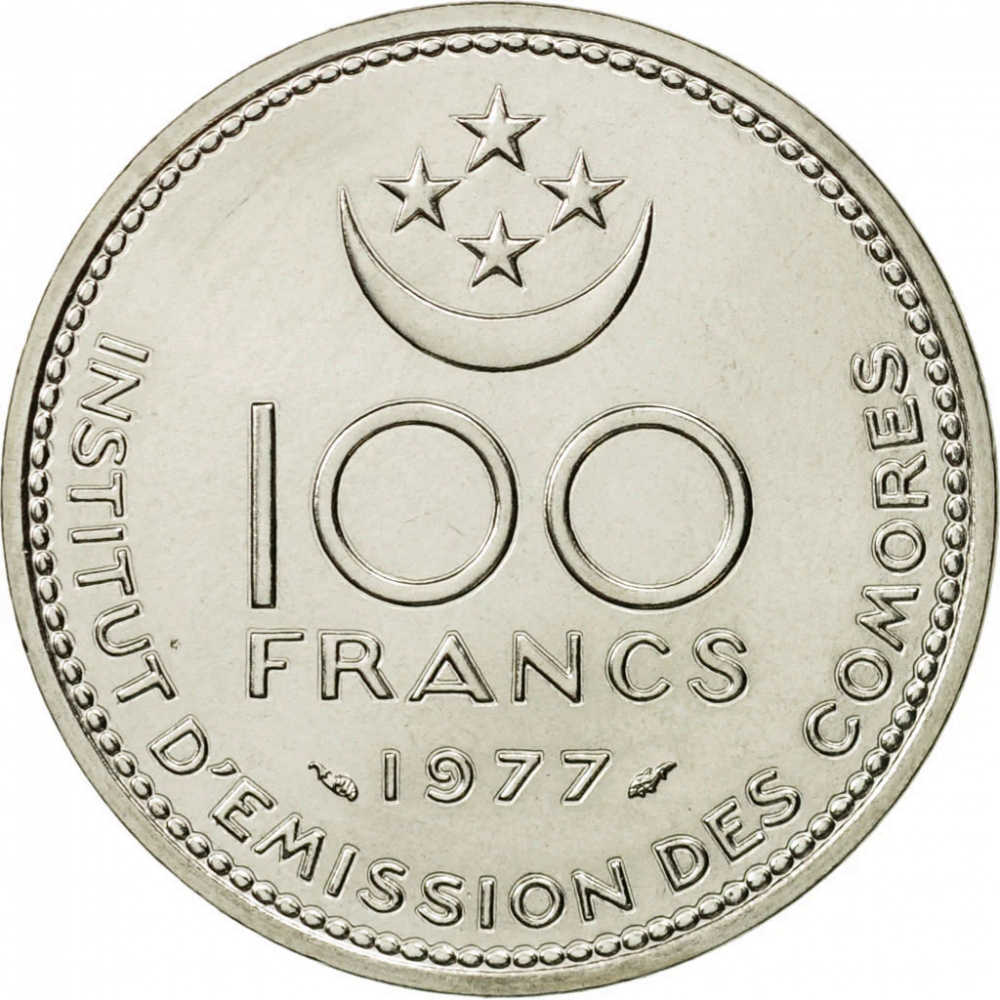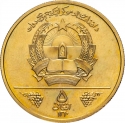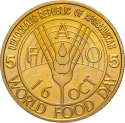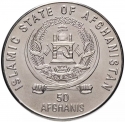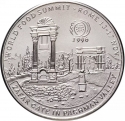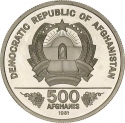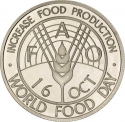You are about to finish your registration. Please check your mailbox (including spam folder). There should be a letter with a confirmation link. Check setting to make sure that your e-mail address is correct.
Send letter againDescription
The Comoros is an island country in the Indian Ocean located at the northern end of the Mozambique Channel off the eastern coast of Africa between northeastern Mozambique, the French region of Mayotte, and northwestern Madagascar. The capital and largest city in Comoros is Moroni.
It became part of the French colonial empire at the end of 19th century before becoming independent in 1975. Since declaring independence, the country has experienced more than 20 coups d'état or attempted coups, with various heads of state assassinated.
An essai is a type of trial strike, typically a non-circulating, non-legal tender coin with a slightly higher mintage than the usual pattern coin.
Obverse

|
Depicts an outrigger boat that would have to go quite far offshore to get to where the tuna were hanging out. The inscription "Bank of Comoros" in Arabic letters above, and in French below, the inscription "Essai" (a coin prototype) is right below the legend. بـنـك يا كمور |
|---|---|
Reverse

|
Depicts a crescent with four five-pointed stars similar to the flag of Comoros (1975-1978) above denomination, date below, Emission Institute in the bottom. 100 |
| Edge |
100 Francs
Essai
Food and Agriculture Organization (FAO)
Increase Food Production
Subscribe series
KM# E7
Food and Agriculture Organization (FAO)
Increase Food Production
Related coins
Food and Agriculture Organization (FAO)
